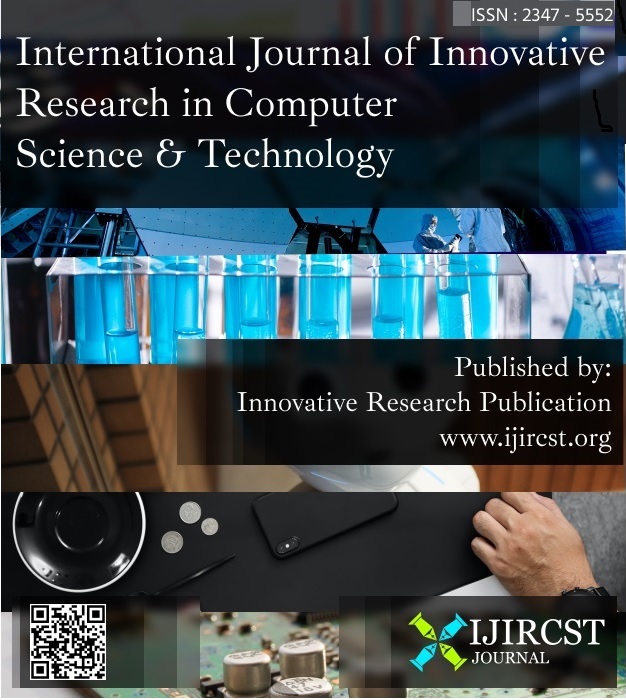An Analysis of Soil Stability Techniques
DOI:
https://doi.org/10.55524/Keywords:
Cement, Chemicals, Clay, Soil, StabilizationAbstract
Soil Steadiness is procedure of augmenting bearing capacity of soil by improving shear asset characteristics of soil. When soil available for building is unsuitable for carrying structural loads, it is needed. Soils have a variety of engineering characteristics that are usually unfavourable. Soil Steadiness is procedureof modifying soils in order to improve ir physical characteristics. Steadiness may improve load bearing capability of a sub-grade to withstand pavements & foundations through enlarging soil’s shear strength &/or governing shrink-swell characteristics of soil. Soil Steadiness is a technique for lowering permeability & compressibility of soil masses in earth constructions while also increasing ir shear strength. primary goal of study is examining physical & chemical characteristics of soil under various stabilizing techniques. Steadiness & its impact on soil describe response procedurewith additives, influence on soil strength, how to enhance & maintain soil moisture content, & building system recommendations. Soil Steadiness may be achieved in a variety of ways. Mechanical & chemical Steadiness are two main categories in which all of se techniques belong. Mechanical Steadiness is procedure of taming attribute of soil by altering its gradation, while chemical Steadiness of extensive soil entails altering physico-syntic around & within clay particles so that earth requires lessen water for maintaining static balance & makes it problematic for water to transfer in & out of framework to maintain particulate balance.
Downloads
References
Shirsath HA, Kale SP, Sharma VK. Soil Stabilizers For Soil Stabilization : A Review. Int J Res Eng Appl Manag. 2018; [2] Reiniger C. Soil stabilization: Types, methods and applications. Soil Stabilization: Types, Methods and Applications. 2017.
Review on Soil Steadiness Techniques. Aust J Basic Appl Sci. 2013;
Rahgozar MA, Saberian M, Li J. Soil Steadiness with non conventional eco-friendly agricultural waste materials: An experimental study. Transp Geotech. 2018;
Upadhyay A, Kaur S. Review on Soil Steadiness Using Ceramic Waste. Int Res J Eng Technol. 2016;
Ikeagwuani CC, Nwonu DC. Emerging trends in expansive soil stabilisation: A review. Journal of Rock Mechanics and Geotechnical Engineering. 2019.
Abdullah HH, Shahin MA, Walske ML. Review of fly-ash based geopolymers for soil steadiness with special reference to clay. Geosciences (Switzerland). 2020.
Archibong GA, Sunday EU, Okeke JC, Amadi OC. A Review of the Principles and Methods of Soil Stabilization. Int J Adv Acad Res | Sci. 2020;
Firoozi AA, Guney Olgun C, Firoozi AA, Baghini MS. Fundamentals of soil stabilization. Int J Geo-Engineering. 2017;
Ghadir P, Ranjbar N. Clayey soil Steadiness using geopolymer and Portland cement. Constr Build Mater. 2018; [11] Afrin H. A Review on Different Types Soil Steadiness
Techniques. Int J Transp Eng Technol. 2017;3(2):19. [12] Onyelowe K, Bui Van D, Igboayaka C, Orji F, Ugwuanyi H. Rheology of mechanical properties of soft soil and Steadiness protocols in the developing countries-Nigeria. Materials Science for Energy Technologies. 2019. [13] Kiran Kumar J, Praveen Kumar V. Soil Steadiness using E waste: A retrospective analysis. In: Materials Today: Proceedings. 2020.
Andavan S, Maneesh Kumar B. Case study on soil Steadiness by using bitumen emulsions - A review. In: Materials Today: Proceedings. 2020.
Vincevica‐gaile Z, Teppand T, Kriipsalu M, Krievans M, Jani Y, Klavins M, et al. Towards sustainable soil Steadiness in peatlands: Secondary raw materials as an alternative. Sustainability (Switzerland). 2021.
M M SH. Soil Steadiness using Lime. Int J Res Appl Sci Eng Technol. 2018;
Alarcón J, Jiménez M, Benítez R. Steadiness of soils through the use of oily sludge. Rev Ing Constr. 2020; [18] Yilmaz F, Duman V. Usability of midyat stone wastes in soil stabilization. El-Cezeri J Sci Eng. 2020;
Lee S, Kim J. An Experimental Study on Enzymatic Induced Carbonate Precipitation Using Yellow Soybeans for Soil Stabilization. KSCE J Civ Eng. 2020;
Heitor A, Parkinson J, Kotzur T. The role of soil steadiness in mitigating the impact of climate change in transport infrastructure with reference to wetting processes. Appl Sci. 2021;
Jafer H, Majeed ZH, Dulaimi A. Incorporating of two waste materials for the use in fine-grained soil stabilization. Civ Eng J. 2020;
Gowthaman S, Mitsuyama S, Nakashima K, Komatsu M, Kawasaki S. Biogeotechnical approach for slope soil Steadiness using locally isolated bacteria and inexpensive low-grade chemicals: A feasibility study on Hokkaido expressway soil, Japan. Soils Found. 2019;
Kowalski TE, Starry DW. Modern soil Steadiness techniques. In: TAC/ATC 2007 - 2007 Annual Conference and Exhibition of the Transportation Association of Canada: Transportation - An Economic Enabler. 2007.
Afrin H. A Review on Different Types Soil Steadiness Techniques. Int J Transp Eng Technol. 2017;
Ramaji AE. A review on the soil Steadiness using low-cost methods. Journal of Applied Sciences Research. 2012. [26] Singh R, Ray D., Mehrotra A, Afaque Khan M. A Review
Paper on Comparative Study of Soil Steadiness with Widely used Admixtures Like Lime, Cement, Flyash and Bitumen Emulsion. Int J Eng Trends Technol. 2018;58(2):96–9.
